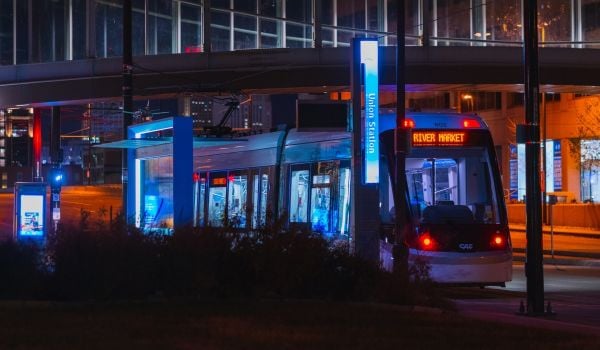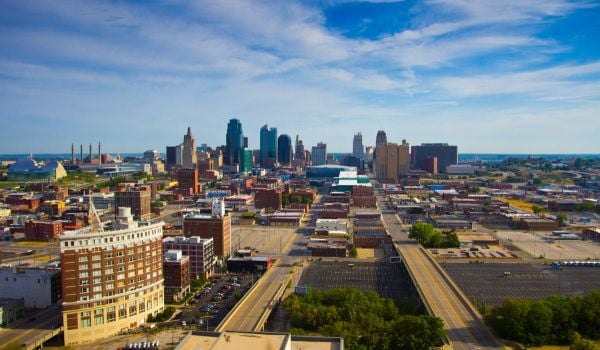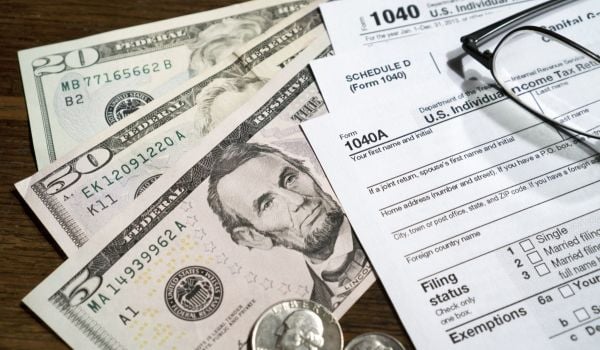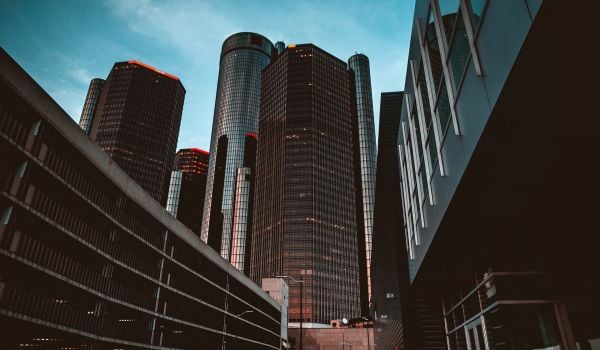Ridership figures show that Kansas Citians have taken to the city’s new downtown streetcar line. Ridership on the Missouri city’s 2.2-mile line connecting the River Market with Crown Center has averaged over 6,000 passengers a day, well exceeding initial projections. The fact that the line is free to use has probably boosted the figures, but a sales tax surcharge in the district the line serves covers its operating expenses.
What Kansas Citians may not have taken to, however, is extending it beyond those first 2.2 miles. Which is a problem, for the line was intended to serve as the initial segment of what would eventually become a citywide rail transit system.
Two years ago, as the starter line was still under construction, the city put a package of three extensions — one to the University of Missouri-Kansas City campus, one to the northeast part of the city, and one to the city’s largely black East Side — up for a vote. The measure went down to defeat mostly because of opposition from East Side voters.
In the city’s Midtown section, however, voters favored the extension to UMKC. That fact has now led a group of citizens to take matters into their own hands.
Taking advantage of a unique provision in Missouri law, the Kansas City Regional Transportation Alliance (KCRTA), a citizens group that advocates for better, more seamless transit across the two-state metropolitan area, submitted a private-sector petition to the Jackson County Circuit Court June 9 to have a more narrowly focused expansion proposal placed on the ballot.
David Johnson, KCRTA board vice chair, says the group decided to organize the citizen-led transit expansion drive after reviewing the 2014 election results.
“Based on conversations with private-sector organizations, neighborhood groups and businesses along the Main Street corridor, we decided to revise the failed 2014 proposal,” he explains. “Along the corridor, there was strong support. We’re confident that if the judge allows the ballot question to proceed, the proposal will be successful.”
This do-it-yourself approach to transit expansion was baked into the Missouri law that authorized the establishment of transportation development districts (TDDs) financed by sales taxes. “The intent of the legislation was to give regular people a chance to finance their own transportation projects, especially in the case where you don’t have city or state support” for financing new projects, Johnson says.
There’s a very practical reason, he adds, for pursuing expansion now: As it stands, the starter line provides no real commuter transportation, a primary function of most transit service. “We’re doing this to keep the streetcar from being a 2-mile butt of a joke,” he says. “It’s actually one of the most efficient streetcar lines in the United States, but people still ask, ‘Why did you build it?’” The Main Street extension also holds out the promise of boosting Downtown Kansas City’s resident population by providing faster service to the Country Club Plaza, the upscale shopping center near the extension’s south end that is also the hub of one of Kansas City’s largest edge cities. A streetcar connecting the two would provide a rare chance to see how well a line that provides commuter service in both directions will perform.
Locals might be forgiven for confusing this effort with the repeated attempts by former Kansas Citian Clay Chastain to commit the city to building a more extensive citywide light-rail transit network. Chastain-sponsored LRT proposals — at least nine to date, with Chastain also petitioning for another one to go before voters this fall — have gone down to defeat every time except once, in 2006. (The City Council eventually voted to repeal that one on the grounds that it was unworkable and the financing plan unrealistic.)
The KCRTA’s approach is different, Johnson points out. “Chastain is dictating every aspect of his plan,” he says. “We’re saying, ‘City, you already did a plan in 2014. We’re just giving you a financing plan. You can take it from there.’”
The KCRTA-sponsored initiative also differs in the way the TDD will be run. Where the current district covering the downtown streetcar has a city-appointed board, the new TDD — which would absorb the existing one if it is approved — will have a board elected by district residents. “There’s a very direct democracy aspect to this approach,” Johnson says.
Unlike Chastain’s repeated efforts, it stands to build a durable foundation for expanding rail transit in Kansas City if it succeeds. It could even lead to a revival of East Side expansion plans down the road. “The people involved in neighborhood politics [on the East Side] had a different perspective than the people who turned out to vote,” Johnson says. The city’s leading black political organization, Freedom Inc., spearheaded the opposition with a campaign that likened the expanded taxing district to Jim Crow laws, implying that East Side residents would pay for something that did not benefit them. The city plans to add a new Metropolitan Area Express (MAX) bus rapid transit line down Prospect Avenue, the East Side’s main commercial thoroughfare, but it lacks a local match for its federal Small Starts grant. That will likely take the form of city borrowing via a bond issue to be voted on next year.
A Jackson County Circuit Court judge will hold a public hearing on the citizen petition Sept. 15. If the judge allows the proposal to go before the voters, state law mandates three separate elections, two of which involve mail-in ballots, in order to approve the plan. That means that the earliest the city could restart work on the Main Street streetcar extension would be 2018. But that would still be an advance over the present situation and a chance for transit advocates to prove that the KC Streetcar’s popularity is no fluke.

Next City contributor Sandy Smith is the home and real estate editor at Philadelphia magazine. Over the years, his work has appeared in Hidden City Philadelphia, the Philadelphia Inquirer and other local and regional publications. His interest in cities stretches back to his youth in Kansas City, and his career in journalism and media relations extends back that far as well.
Follow Sandy .(JavaScript must be enabled to view this email address)















